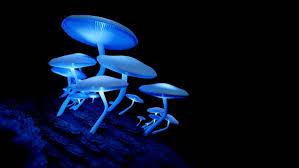Scientists have made an exciting breakthrough by developing a type of bioluminescent wood that can glow on its own. This innovation, which combines natural materials with advanced chemistry, has the potential to revolutionize sustainable lighting, eco-friendly construction, and even futuristic furniture.
How Does the Glowing Woodwork?
Researchers have modified wood at a molecular level to incorporate luminescent properties. The process typically involves:
- Lignin, a structural polymer that gives wood its rigidity, is partially removed. This step makes the wood more transparent and easier to modify.
- Scientists introduce phosphorescent or fluorescent nanoparticles, also called luminophores, which absorb and slowly release light.
- These materials allow the wood to store sunlight or artificial light and then glow in the dark for hours.
Enhancing Strength and Transparency
- A polymer (such as epoxy or acrylic) is used to restore the wood's strength while allowing light to pass through, making it both durable and aesthetically appealing.
How Does the Wood Light Up?
The breakthrough involves embedding bioluminescent properties into natural wood. Researchers achieved this by:
- Introducing enzymes from bioluminescent organisms (like fireflies or glowing fungi) into the wood's structure.
- Using a chemical reaction involving luciferin, luciferase, and oxygen, which produces light without needing an external power source.
- Modifying the wood at a molecular level to sustain the glow for extended periods.
Potential Applications
This glowing wood could have multiple real-world uses, including:
- Eco-friendly street lighting – reducing reliance on electricity.
- Interior design – glowing wooden furniture or floors.
- Sustainable signage – self-illuminating emergency exits.
- Futuristic architecture – integrating light-emitting wood into buildings.
- Sustainable Lighting – Energy-free glowing surfaces could reduce reliance on artificial lights.
- Smart Furniture – Tables, floors, or walls that softly illuminate at night.
- Architectural Design – Eco-friendly glowing buildings or artistic installations.
- Emergency Lighting – Non-electric glow-in-the-dark wood could help guide people in power outages.
What’s Next?
Scientists are now working on increasing the glow duration and intensity while keeping production cost-effective. If scaled successfully, luminescent wood could become a game-changer in green building materials and self-sustaining illumination.
A Step Toward Sustainable Lighting
This innovation could help reduce energy consumption and promote biodegradable, renewable materials in everyday use.






0 Response to "Scientists Discover Wood That Can Light Up on its Own"
Post a Comment